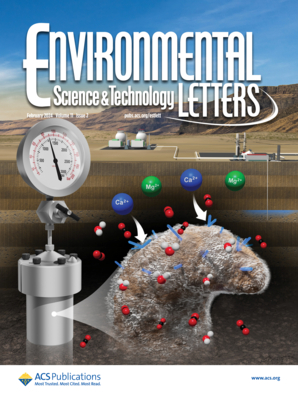与年龄相关的神经心血管疾病中的淀粉样蛋白-β代谢
IF 8.9
2区 环境科学与生态学
Q1 ENGINEERING, ENVIRONMENTAL
Environmental Science & Technology Letters Environ.
Pub Date : 2024-11-11
DOI:10.1093/eurheartj/ehae655
引用次数: 0
摘要
流行病学证据表明,心脑血管疾病(包括中风、阿尔茨海默病、血管性痴呆、心脏病和外周血管疾病)的发生和预后存在共同的风险因素。有害血液信号的积累可能诱发器官型内皮功能障碍,影响血脑屏障功能和老年相关疾病的血管健康。与遗传、年龄、生活方式或心血管治疗相关的大脑和外周淀粉样β(Aβ)肽代谢失衡可能是老年相关神经心血管疾病之间缺失的一环。与 Aβ 代谢相关的基因多态性、生活方式的改变、临床实践中使用的药物以及针对 Aβ 的治疗方法可能会调节 Aβ 水平,从而影响大脑、血管和心脏疾病。这篇叙述性综述阐述了干预措施对大脑、脑脊液、血液和外周心脏或血管组织中 Aβ 代谢的影响。此外,还讨论了 Aβ 作为与年龄有关的神经心血管疾病之间的联系对临床适用性的影响、知识差距以及未来展望。本文章由计算机程序翻译,如有差异,请以英文原文为准。
Amyloid-beta metabolism in age-related neurocardiovascular diseases
Epidemiological evidence suggests the presence of common risk factors for the development and prognosis of both cardio- and cerebrovascular diseases, including stroke, Alzheimer's disease, vascular dementia, heart, and peripheral vascular diseases. Accumulation of harmful blood signals may induce organotypic endothelial dysfunction affecting blood–brain barrier function and vascular health in age-related diseases. Genetic-, age-, lifestyle- or cardiovascular therapy–associated imbalance of amyloid-beta (Aβ) peptide metabolism in the brain and periphery may be the missing link between age-related neurocardiovascular diseases. Genetic polymorphisms of genes related to Aβ metabolism, lifestyle modifications, drugs used in clinical practice, and Aβ-specific treatments may modulate Aβ levels, affecting brain, vascular, and cardiac diseases. This narrative review elaborates on the effects of interventions on Aβ metabolism in the brain, cerebrospinal fluid, blood, and peripheral heart or vascular tissues. Implications for clinical applicability, gaps in knowledge, and future perspectives of Aβ as the link among age-related neurocardiovascular diseases are also discussed.
求助全文
通过发布文献求助,成功后即可免费获取论文全文。
去求助
来源期刊

Environmental Science & Technology Letters Environ.
ENGINEERING, ENVIRONMENTALENVIRONMENTAL SC-ENVIRONMENTAL SCIENCES
CiteScore
17.90
自引率
3.70%
发文量
163
期刊介绍:
Environmental Science & Technology Letters serves as an international forum for brief communications on experimental or theoretical results of exceptional timeliness in all aspects of environmental science, both pure and applied. Published as soon as accepted, these communications are summarized in monthly issues. Additionally, the journal features short reviews on emerging topics in environmental science and technology.
 求助内容:
求助内容: 应助结果提醒方式:
应助结果提醒方式:


